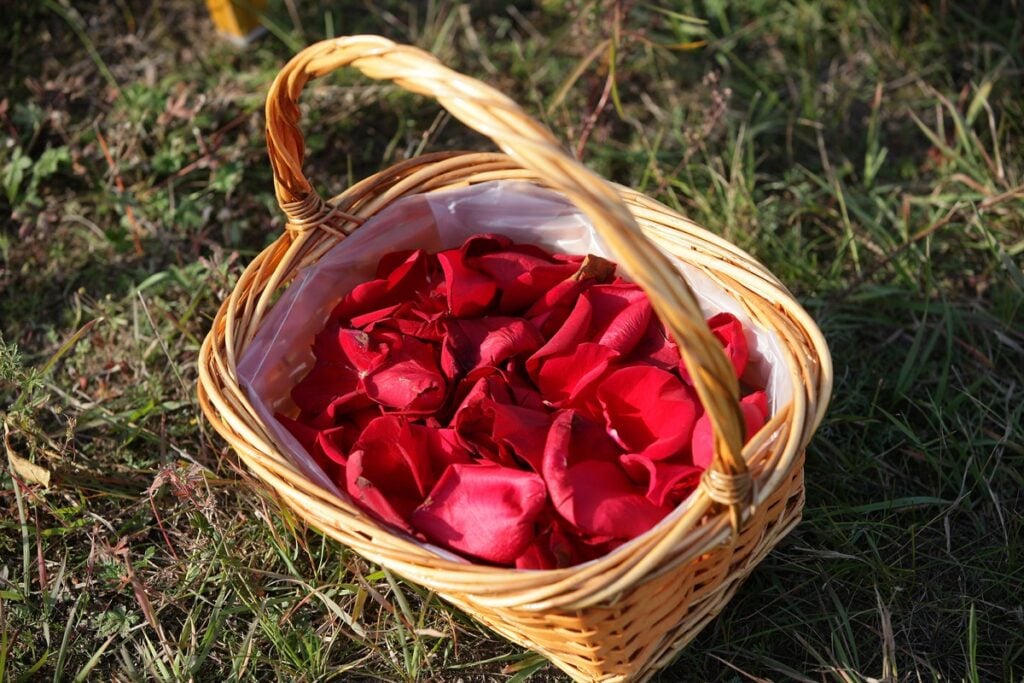Flowers are a meaningful addition to ash scattering ceremonies, symbolizing beauty, love, and remembrance. Thoughtfully selecting and preparing flowers can enhance the emotional and symbolic aspects of the ceremony, while also respecting the environment. Here’s a guide to help you choose and prepare flowers for this significant occasion.
Why Include Flowers in an Ash Scattering?
Incorporating flowers into an ash scattering ceremony adds a personal and symbolic touch. They can:
- Represent emotions such as love, grief, and remembrance based on their type and color.
- Serve as biodegradable tributes, aligning with eco-friendly values.
- Provide attendees with a meaningful way to participate in the ceremony, creating a shared moment of reflection.
Selecting Flowers for Ash Scattering
When choosing flowers, consider their symbolism, the preferences of the deceased, and the practicality of scattering them. Here are some factors to keep in mind:
- Symbolism: Many flowers hold specific meanings. For instance, roses symbolize love and respect, lilies represent peace, and sunflowers signify adoration and loyalty.
- Personal Significance: Choose flowers that the deceased loved or that hold a special memory.
- Environmental Impact: Use natural, untreated flowers to ensure they are biodegradable.
- Local and Seasonal Options: Selecting in-season flowers reduces cost and environmental impact.
Here are some common flowers for ash scattering ceremonies:
- Roses: Symbolize love and respect; petals are ideal for scattering.
- Lilies: Represent peace and the restoration of innocence.
- Sunflowers: Add a bright, uplifting element.
- Forget-Me-Nots: Represent lasting memories and remembrance.
- Chrysanthemums: Often associated with mourning and remembrance.
Preparing Flowers for the Ceremony
Proper preparation ensures the flowers are fresh, appropriate for the setting, and easy to handle during the ceremony. Follow these steps:
- Choose Between Whole Blooms or Petals: Decide whether you want to scatter individual petals or use entire flowers. Petals create a more dispersed effect, while whole blooms are more striking visually.
- Remove Non-Biodegradable Elements: Strip away any synthetic materials like ribbons, plastic wrap, or floral wires.
- Keep Flowers Fresh: Store them in a cool, shaded place and transport them in breathable containers. If the flowers will be used later, refrigerate them to maintain freshness.
- Prepare Extra Supplies: For petals, use biodegradable bags, cones, or baskets to make distribution easier for attendees.
Guidance on Preparing Petals for Attendees to Scatter
Offering petals for attendees to scatter provides a tactile and symbolic way for everyone to participate. Here’s how to prepare petals for this purpose:
- Selecting Petals: Opt for sturdy, biodegradable petals such as those from roses, lilies, or daisies. Their texture and shape make them ideal for scattering.
- Removing Petals: Gently pluck petals from the blooms to avoid damage. Store them in shallow containers lined with tissue paper to preserve their freshness.
- Packaging for Attendees: Use biodegradable bags, paper cones, or small pouches for individual portions. For a communal approach, arrange petals in baskets or trays for easy access.
- Enhancing the Experience: Add fragrance with a light mist of essential oils, or mix petals of different colors for a vibrant scattering.
Incorporating Flowers Into the Ceremony
Flowers can be integrated into the ash scattering ceremony in several ways:
- Simultaneous Release: Scatter petals or release whole blooms at the same time as the ashes for a cohesive tribute.
- Floating Offerings: For water scatterings, allow flowers or petals to float alongside the ashes.
- Symbolic Markers: Create a temporary floral marker at the scattering site to honor the loved one.
- Personal Involvement: Invite attendees to scatter their petals or flowers during a moment of silence or shared reflection.
Environmental Considerations
Many ash scattering locations, especially in natural settings, have regulations to protect the environment. Always verify that scattering ashes and releasing flowers is allowed. Avoid flowers treated with dyes or chemicals and opt for locally grown, untreated blooms.
Common Questions About Flowers in Ash Scattering Ceremonies
Here are commonly asked questions about flowers for ash scattering ceremonies.
What flowers are best for ash scattering?
Roses, lilies, daisies, and sunflowers are popular choices for their symbolism and biodegradability.
Can I use artificial flowers?
Avoid artificial flowers as they are not biodegradable and can harm the environment.
Do I need to coordinate the flowers with the urn?
This is a personal choice. Matching colors or themes can create a harmonious look, but it’s not necessary.
How should I store petals before the ceremony?
Keep petals in a cool, shaded place or refrigerate them in breathable containers to maintain freshness. Storing them in a paper bag can help.
Can guests bring their own flowers?
Yes, allowing guests to bring their own flowers or petals adds a personal touch to the ceremony.
What else do I need to know about flowers at funerals?
See our extensive FAQ about funeral flowers.

